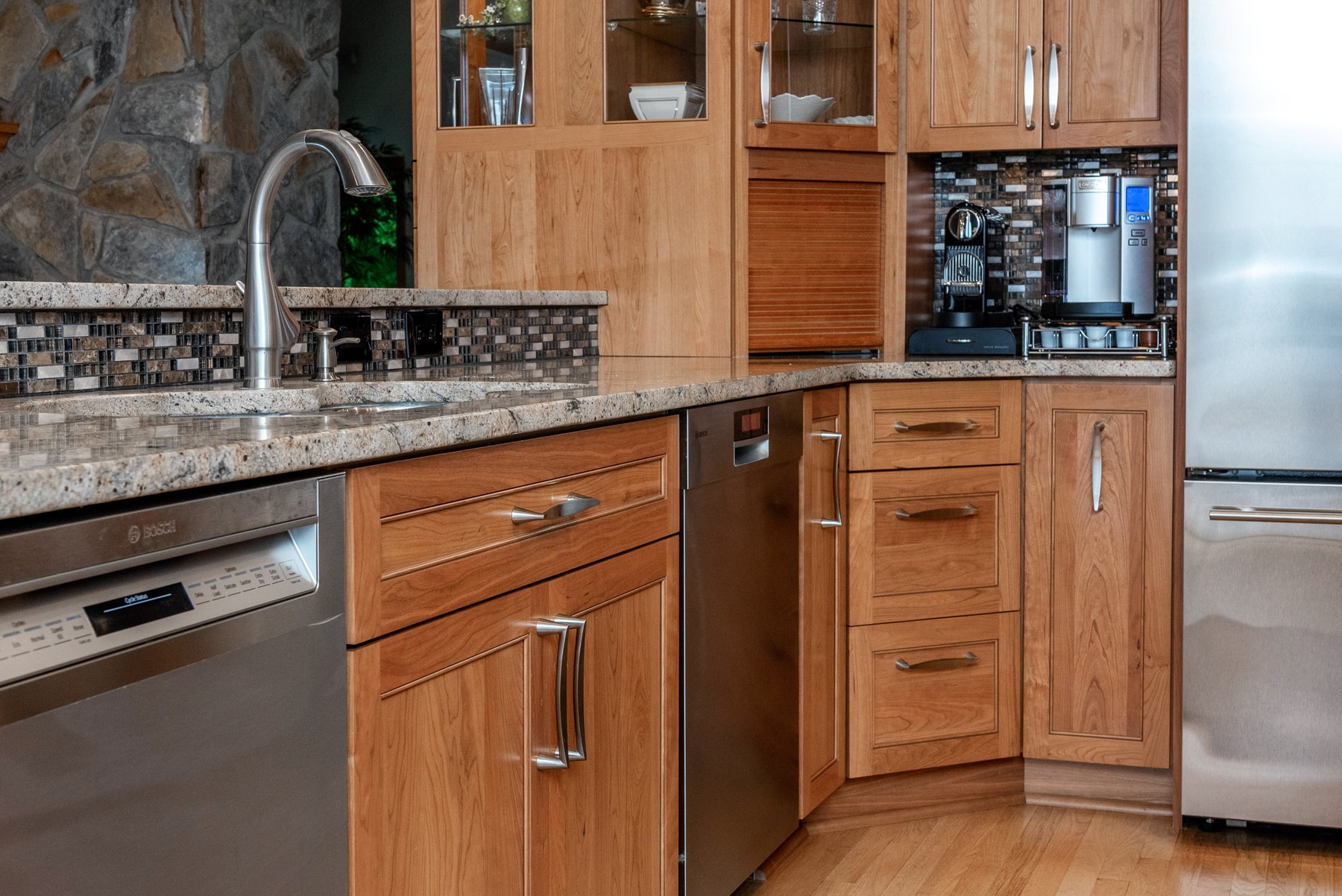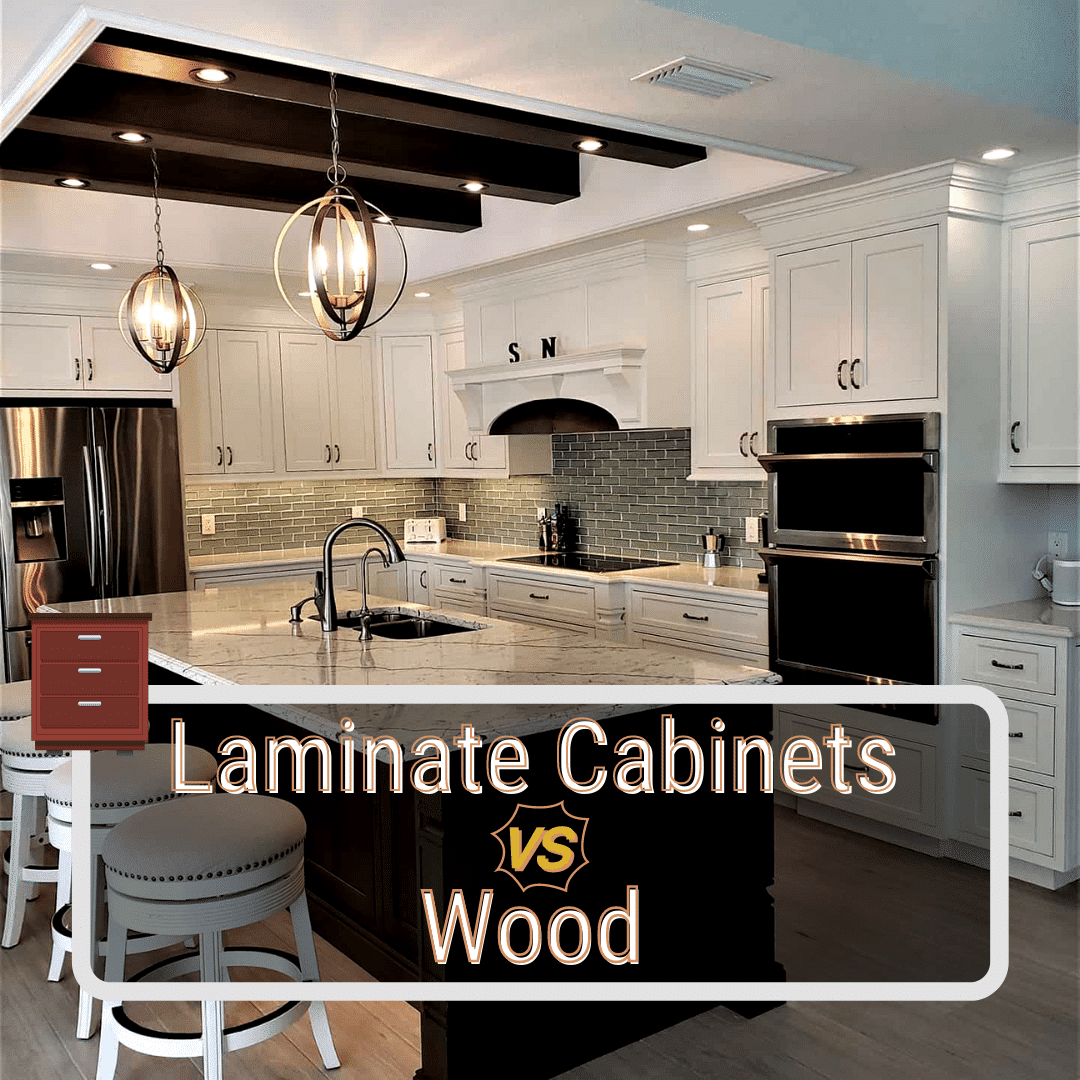Cost Comparison

When deciding between laminate and wood cabinets, cost is a major factor. While laminate cabinets are typically more affordable upfront, wood cabinets offer long-term value due to their durability and potential for refinishing.
Initial Cost Comparison, Laminate cabinets vs wood
The initial cost of laminate cabinets is generally lower than wood cabinets. This is because laminate is a less expensive material to produce and requires less labor to install.
- Laminate cabinets: Typically range from $100 to $300 per linear foot, depending on style, features, and quality.
- Wood cabinets: Prices can vary significantly, starting from $200 to $600 per linear foot, depending on wood type, construction, and finishing.
Long-Term Cost Considerations
While laminate cabinets are initially cheaper, there are long-term cost considerations to factor in.
- Durability: Wood cabinets are more durable and can withstand wear and tear better than laminate cabinets. They are less prone to scratches, dents, and water damage.
- Maintenance: Laminate cabinets require minimal maintenance, but wood cabinets may need occasional refinishing or repairs. However, the cost of refinishing wood cabinets is often less than replacing laminate cabinets.
- Refinishing: Wood cabinets can be refinished multiple times, giving them a longer lifespan and allowing you to update their style as needed. This can save you money in the long run compared to replacing laminate cabinets.
Price Range Examples
Here are some examples of price ranges for laminate and wood cabinets in different styles and materials:
- Entry-level laminate cabinets: Can be found for as low as $100 per linear foot, often featuring simple designs and basic features.
- Mid-range laminate cabinets: Priced between $200 to $300 per linear foot, offering more sophisticated designs, features like soft-close drawers, and higher-quality construction.
- Entry-level wood cabinets: Start at around $200 per linear foot, typically using solid wood construction with basic finishes.
- Mid-range wood cabinets: Priced between $300 to $500 per linear foot, featuring higher-quality wood species, more intricate details, and custom finishing options.
- High-end wood cabinets: Can cost over $600 per linear foot, utilizing premium wood species, hand-crafted construction, and custom finishes.
It’s important to consider the long-term value of wood cabinets, which can be refinished multiple times, extending their lifespan and saving you money in the long run.
Appearance and Style: Laminate Cabinets Vs Wood

The visual appeal of your kitchen cabinets is a significant factor in creating the overall ambiance of your space. Both laminate and wood cabinets offer distinct aesthetics that can cater to various design preferences.
Laminate Cabinet Styles
Laminate cabinets provide a wide range of design options to suit diverse tastes. They are known for their durability and affordability, making them a popular choice for many homeowners.
- Color Variety: Laminate cabinets come in an extensive palette of colors, from classic white and black to bold hues like red, blue, and green. You can find laminates that mimic the look of natural wood, stone, or even metallic finishes.
- Finishes: Laminate cabinets offer a variety of finishes, including matte, gloss, and textured surfaces. This allows for a diverse range of styles, from sleek and modern to rustic and traditional.
- Styles: Laminate cabinets can be designed in various styles, including contemporary, transitional, and traditional. This flexibility allows you to create a kitchen that reflects your personal style.
Laminate cabinets vs wood – For instance, a contemporary kitchen might feature sleek, white laminate cabinets with minimalist hardware, while a traditional kitchen could incorporate warm-toned laminate cabinets with ornate details.
Wood Cabinet Styles
Wood cabinets offer a natural, timeless elegance that can enhance the beauty of any kitchen. They are known for their warmth, richness, and ability to age gracefully.
- Wood Species: The choice of wood species significantly impacts the appearance and cost of wood cabinets. Popular options include cherry, maple, oak, and walnut, each offering a unique grain pattern and color.
- Finishes: Wood cabinets can be stained or painted to achieve a wide range of colors and finishes. Stained wood cabinets showcase the natural beauty of the wood grain, while painted cabinets provide a more uniform look.
- Styles: Wood cabinets are versatile and can be designed in various styles, from rustic farmhouse to modern minimalist. They can be customized with different door styles, hardware, and accents to create a unique look.
For example, a farmhouse kitchen might feature rustic oak cabinets with distressed finishes, while a modern kitchen could incorporate sleek, white-painted maple cabinets with minimalist hardware.
Durability and Maintenance

The durability and maintenance requirements of laminate and wood cabinets are significant factors to consider when making a decision. Both materials have their strengths and weaknesses, and the best choice for you will depend on your individual needs and preferences.
Durability
The durability of laminate and wood cabinets is determined by their resistance to scratches, stains, and moisture.
- Laminate cabinets are highly resistant to scratches, stains, and moisture due to their non-porous surface. The laminate layer is a protective barrier that shields the underlying material from damage. They are a good choice for high-traffic areas, such as kitchens and bathrooms, where they are likely to be exposed to spills and wear and tear.
- Wood cabinets, on the other hand, are more susceptible to scratches, stains, and moisture. The porous nature of wood makes it prone to absorbing liquids, which can lead to warping, discoloration, and even mold growth. However, with proper care and maintenance, wood cabinets can last for many years.
Maintenance
The maintenance requirements for laminate and wood cabinets vary significantly.
- Laminate cabinets require minimal maintenance. They can be cleaned with a damp cloth and mild detergent. Avoid using abrasive cleaners, as these can damage the laminate surface. Since laminate is non-porous, it does not require sealing.
- Wood cabinets require more frequent maintenance than laminate cabinets. They should be cleaned regularly with a damp cloth and mild soap. It is also important to seal wood cabinets with a protective finish, such as polyurethane or varnish, to help prevent moisture damage and scratches. This sealing process should be repeated every few years, depending on the type of finish and the amount of wear and tear the cabinets experience. Regularly inspecting and reapplying sealant will help to maintain the beauty and longevity of your wood cabinets.
Damage Prevention
Damage to both laminate and wood cabinets can be prevented with proper care and handling.
- Laminate cabinets are less prone to damage than wood cabinets. However, they can still be scratched or chipped if they are not handled carefully. Avoid using sharp objects on the laminate surface, and be careful when opening and closing cabinet doors. It is also important to avoid exposing laminate cabinets to extreme temperatures, as this can cause the laminate to warp or delaminate.
- Wood cabinets are more susceptible to damage than laminate cabinets. To prevent damage, handle them carefully and avoid using harsh cleaners. It is also important to protect wood cabinets from moisture, as this can cause warping and discoloration. Keep your cabinets clean and dry to ensure their longevity.
Laminate cabinets are a great option for those looking for a budget-friendly and durable choice, while wood cabinets offer a more luxurious and timeless feel. For a white and pastel blue bedroom, like the serene retreat featured on this website, you might consider white laminate cabinets for a clean and modern look, or go for light wood cabinets for a warmer and more traditional vibe.
Ultimately, the choice comes down to your personal style and budget.
Laminate cabinets are great for their durability and affordability, but wood cabinets just have that timeless charm. If you’re looking for a bold statement in your bathroom, you might consider a red bathroom vanity cabinet. Just remember, red can be a strong color, so it’s best to use it sparingly in your design, especially if you’re going for a more traditional look with wood cabinets.
